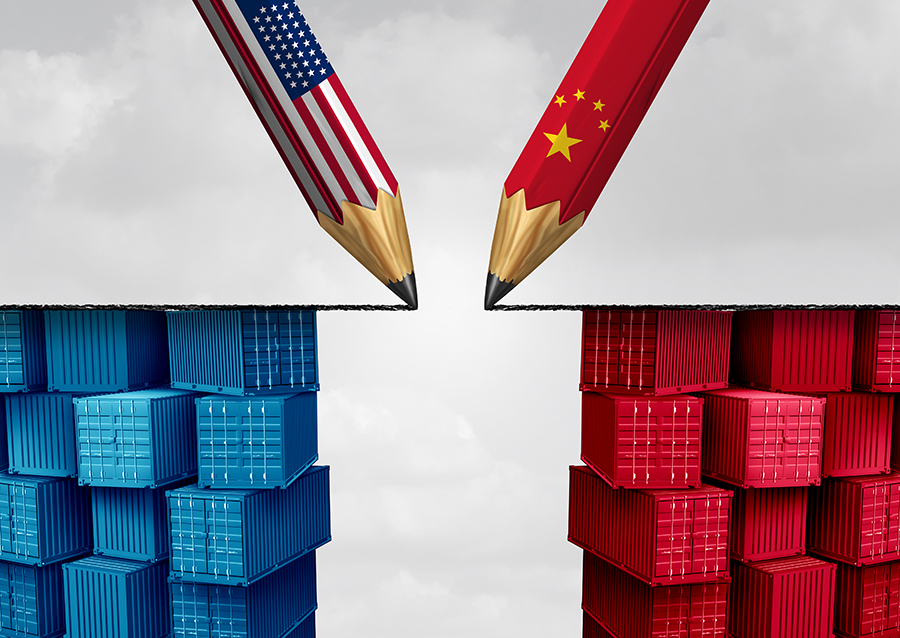
During the Donald Trump administration, the United States and China imposed tit-for-tat tariffs that heightened economic tensions. The current administration under President Joe Biden, despite its efforts to downplay the decoupling theory, has largely maintained the previous restrictive trade policies toward China. Additionally, it has leveraged tax incentives and government subsidies to encourage the reshoring of manufacturing to the United States and forged alliances in supply chains to hasten the return of manufacturing jobs, all with the intent of reducing dependence on Chinese goods.
Trade data suggest that there is indeed a trend toward decoupling. Since 2018, Chinese imports into the U.S. have been on the decline. Between 2017 and 2022, China’s share of imports to the U.S. fell from 21.6 percent to 16.3 percent (down 5.3 percent), equivalent to the 2007 level before the outbreak of the international financial crisis. When it comes to imports of advanced technological products categorized by Washington as “strategic products,” the decline is even more significant, dropping from 36.8 percent in 2017 to 23.1 percent in 2022 (down 13.7 percent). This downward trajectory is most notable in goods subject to tariffs, and U.S. imports of similar products from other countries have surged, indicating that tariffs are the main contributors to the reduction in Chinese imports into the U.S.
While the U.S. has increased imports from other countries, these nations have simultaneously increased their imports of intermediate goods from China. The countries that have seen the biggest increase in exports to the U.S. are Vietnam (up 1.9 percent), Canada (0.75 percent), Mexico (up 0.64 percent), India (up 0.57 percent) and South Korea (up 0.53 percent) — all of which have strengthened their trade ties with China. U.S. imports from Taiwan were up by 1 percent.
Vietnam’s exports to the U.S. grew by 24.7 percent annually from 2010 to 2011; however, it saw the share imports from China increase from 10.8 percent in 2017 to 20.3 percent in 2021. This demonstrates that while the U.S. attempts to divert its imports away from China to others, these others have seen a growing reliance on Chinese imports, especially when it comes to technological products, which are closely associated with China-U.S. decoupling. Those that have increased imports from China have also increased their exports to the United States.
This strong correlation underscores the significance of trade relations with China for those seeking to replace Chinese imports to the U.S., as they have established industry-wide supply chains together with China. In other words, while direct trade links between the U.S. and China may have shrunk, the overall U.S. reliance on China has not been reduced. Washington’s new strategy may alter its trading and economic dynamics with China, but it cannot entirely remove China from the picture. What are the factors that account for this result?
First is the entrenched nature of trade models. While global trade and global supply chains have been adjusted in response to Washington’s policies, the nature of trade models makes it impossible for the United States to reshape global supply chains. Despite facing high tariffs and trade bans, private businesses continue to base their decisions on economic factors, such as returns on investment, location of facilities, business environments and destinations of their products. In this sense, the enduring nature of trade models has decreased U.S. political demand for friendshoring or nearshoring.
Second is China’s remarkable industrial adaptability and competitiveness. On the industrial front, the huge advantages of the Chinese market and the strength of its manufacturing sector mean that proximity to China should be considered in building supply chains. On the technology front, China’s large consumer market enables the rapid transformation of innovation into marketable products, and the advantages of its high-tech sector can catalyze the growth of other sectors to generate higher returns to fuel technological innovation. These factors empower China, which is a latecomer (and facing containment efforts), to narrow the gap with advanced economies and produce competitive products. Consequently, the U.S. will likely be unable to diminish China’s economic significance in Asia.
Third is the impact of U.S. allies on the effectiveness of its policies. Washington may not carefully consider the interests of its trading partners, but these partners face unpredictable risks and consequences brought by the U.S. trade war with China. Against this backdrop, some of these trade partners have to reckon with their marginalized roles on the world stage.
Today, these trading partners are diversifying their means of resource allocation and strategies to pursue a balance of power within their alliances with Washington and to mitigate the risks and drawbacks of U.S. policies. In reality, most of them are far from being able to reduce their economic dependence on China.